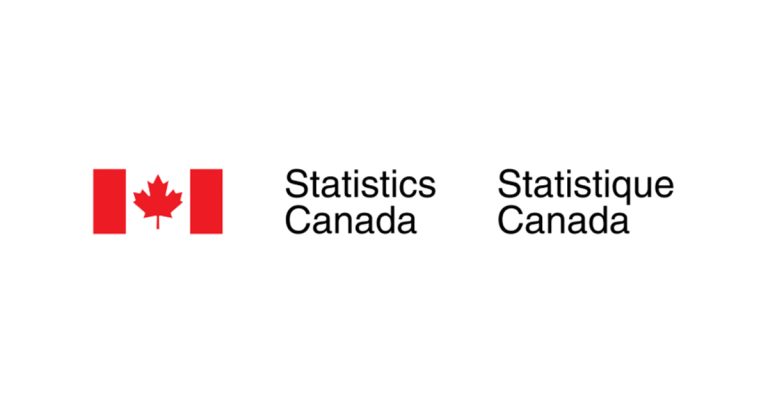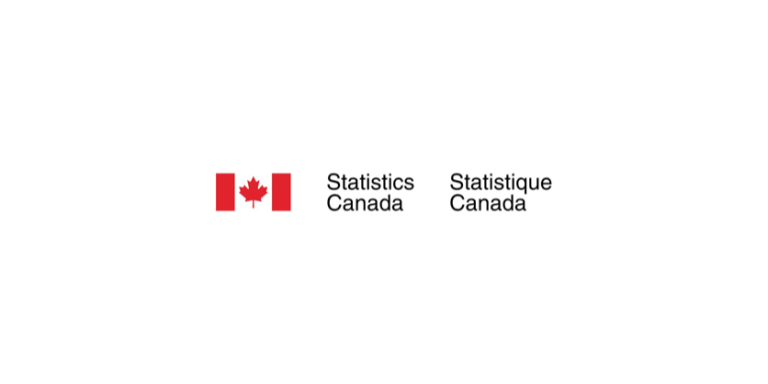How COVID-19 Is Affecting the Canadian Economy, 2020: Third Edition
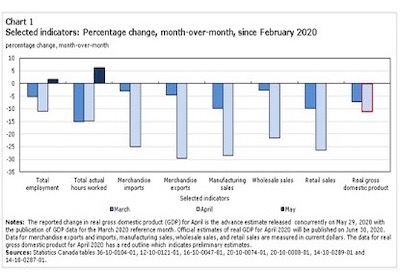
July 28, 2020
By Sean Clarke, Carter McCormack et Wisha Asghar
Sudden shutdowns are leading to severe contractions across advanced economies.
After the COVID-19 virus spread beyond China’s borders in early 2020, countries around the globe began to implement various types of public health measures, including social distancing and self-isolation, to limit the spread of the virus. Notable exceptions include South Korea, Japan, Sweden, the United Kingdom (initially), Hungary, Brazil, and Mexico, where general lockdown measures were either not implemented or were implemented later in the pandemic. Many countries limited all but essential services while attempting to keep frontline workers safe from the virus. The purposeful shutdown of non-essential economic activity, coupled with physical distancing and stay-at-home orders, resulted in severe declines in economic activity across the globe.
In its most recent World Economic Outlook, the International Monetary Fund (IMF) forecasted global output to contract by 4.9% in 2020 as a result of the pandemic. Canada’s annual Gross domestic product (GDP) is expected to decline by 8.4% in 2020, while U.S. output is expected to fall by 8.0%. Germany (-7.8%), France (-12.5%), the U.K. (-10.2%), and Japan (-5.8%) are all expected to experience severe downturns in 2020. China’s growth (+1.0%) is also expected to be considerably slower. Assuming the pandemic fades in the second half of 2020 and that restrictions are lifted gradually, the IMF expects the global economy to expand by 5.4% in 2021. Canada (+4.9%) and the U.S. (+4.5%) are both expected to return to positive growth in 2021.
Canada locks down during March and April resulting in unprecedented declines in economic activity
Ontario and B.C. confirmed their first positive cases of COVID-19 on January 25th and 29th respectively, followed by Quebec on February 27th. On March 11th, the World Health Organization (WHO) classified the spread of the virus as a pandemic. Beginning with Quebec on March 14th, provinces and territories began to issue public health emergencies or states of emergency, closing schools, limiting the size of public gatherings to ever-smaller numbers, and eventually shutting down all but essential services. Restaurants, bars, non-essential retail stores and personal services all began to close in mid-March and by month’s end the country was essentially under lockdown orders. Canada barred foreign nationals from all countries except the United States from entering Canada on March 16th, and then Canada and the U.S. restricted non-essential travel between the two countries on March 20th. These economic restrictions remained in place throughout April in all regions of the country.
The breadth of the shutdowns during March and April resulted in unprecedented declines in economic activity. From February to April, total employment in Canada fell by 15.7% and the unemployment rate rose from 5.6% to 13.0%. Canada’s employment rate – the portion of the working age population that is employed – fell to a record low of 52.1% in April, almost 10 percentage points below the rate in February.
The contraction in Canada’s economic output during March and April was equally severe. Real gross domestic product (GDP) declined by 7.5% in March with sharp reductions in private and public services accounting for over 80% of the overall decline. Real gross domestic product (GDP) then contracted by 11.6% in April as declines among service industries deepened and shutdowns severely impacted output in the construction and manufacturing sector (Chart 1). Public health restrictions across the country subsequently began to ease in mid-May.
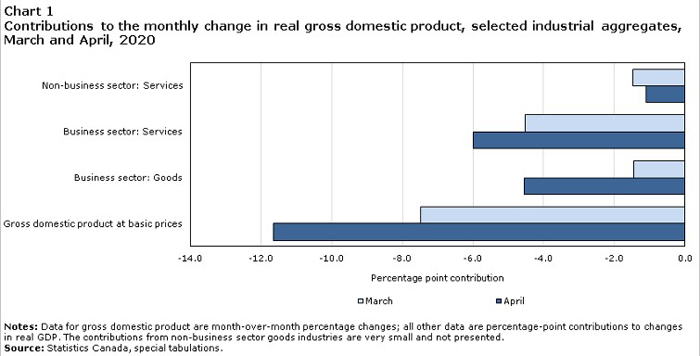
Relaxing economic restrictions in Canada and abroad as the focus shifts to recovery
In recent months, Canada and other countries have begun lifting restrictions on social and economic activity while monitoring any further spread of the virus. The effectiveness of containment strategies during the lockdown and reopening stages will in part affect how the recovery process unfolds: as a V-shaped recovery, where GDP quickly rebounds to pre-crisis levels; a U-shaped recovery, where GDP returns to pre-crisis levels more slowly; an L-shaped recovery, where the output path never returns to pre-crisis levels and growth is lower; or a W-shaped recovery, where countries are forced to re-implement lockdown orders and experience a second decline in output.
National governments across the globe have generally outlined a variety of conditions to manage the reopening process. First, most stimulus measures to support the economy through the lockdown phase, including wage supports for workers, measures to reduce costs or provide funding to businesses, and central bank liquidity measures are expected to continue throughout the reopening.
Second, public health measures will continue to be enforced. The number of people allowed in social gatherings will remain limited throughout the process and only relaxed gradually. Social distancing rules will likely remain in place even after a country has fully reopened. Non-surgical masks are strongly suggested when going outside, especially when social distancing is not practical (for example on public transit or in retail establishments). Vulnerable populations are strongly encouraged to remain indoors, and visits to long-term care facilities and hospitals are generally prohibited.
Third, prior to reopening, the number of new COVID-19 cases must be on the decline. In the U.S., for example, there must be a downward trajectory of both influenza-like illnesses and COVID-like syndromic cases within a 14-day period.
Finally, throughout the process, hospitals must have the capacity to treat all new cases and be able to continue, or ramp up, robust testing for the virus. Any resurgence of the virus may require a slowing of the reopening process or a halting of the process altogether. Germany, for example, introduced an “emergency brake” mechanism that allows restrictions to be immediately renewed if an area registers 50 new infections per 100,000 inhabitants within a seven-day period. Korea recently announced it will re-impose social distancing measures in Seoul by closing museums, parks, and art galleries due to a renewed outbreak of the virus. Citizens were also advised to avoid social gatherings or crowded places including restaurants and bars. In the U.S., a number of States have recently paused their reopening plans (Oregon, Washington, Mississippi, the Carolinas) or have reversed course and begun implementing restrictions again (Florida, Texas, California, Arizona).
The ability to inform those who may have come in contact with an infected person via contact tracing is also being implemented in various jurisdictions. China, South Korea, Taiwan, Singapore, and to a lesser extent Japan have all implemented contact tracing to help slow the spread of the virus.
Most countries implemented phased reopening plans
Most countries adopted a phased approach to reopening. China began to lift restrictions in March, although restrictions in Wuhan, the epicentre of the virus, were not lifted until April. Germany began to lift restrictions at the end of April. The U.S. administration announced its reopening plans in mid-April, with States deciding when to begin the process (Georgia, South Carolina, and Tennessee began to lift restrictions by the end of April). The UK and Italy began to reopen at the beginning of May while much of the rest of Europe, notably France, Spain, and Austria, began around mid-May. Australia and New Zealand both began to lift restrictions in early May.
Canada’s provincial-led phased approach
Nearly every province announced a reopening plan, and most adopted a phased approach (Saskatchewan, PEI, Manitoba, B.C., Northwest Territories, and Yukon) or a staged approach (Alberta, Ontario). Newfoundland and New Brunswick announced a series of alert levels to indicate the threat level caused by the virus. Quebec, Nova Scotia, and Nunavut did not announce specific dates for various phases (Table 1). Common to all approaches is a series of slow, methodical steps to lifting restrictions. Each step involves slowly lifting restrictions on activities that can be categorized into four broad groups: outdoor activities, business, medical procedures, and personal services (although there can be overlap between categories). Currently, most provinces are either well into Phase 3 or early in Phase 4.
While New Brunswick began to reopen in the last week of April, most other provinces started in early-to-mid May. Montreal lagged the rest of Quebec in reopening due to the number of COVID-19 cases in the city. Similarly, Calgary has lagged the rest of Alberta. In Ontario, Toronto and much of the Golden Horseshoe have been slower to reopen compared to the rest of the province for similar reasons. While some provinces announced timelines in which they will move from one phase to the next, not all restrictions planned for a given phase are lifted on day one. Provinces have gradually lifted restrictions over a period of weeks within each phase before proceeding to the next phase.
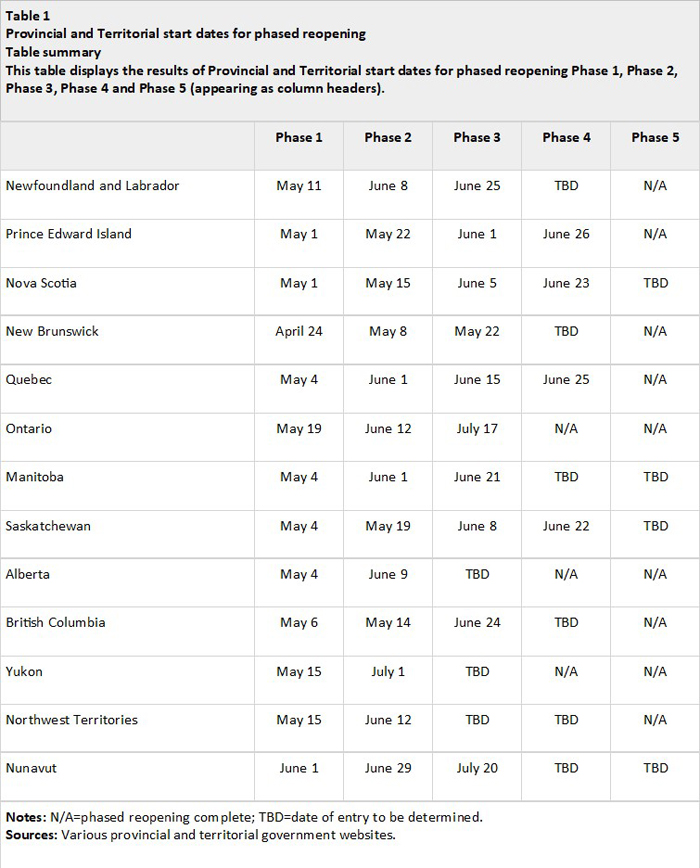
Selected aspects of Phase 1
During Phase 1, a limited number of businesses that were not deemed essential during the lockdown phase were able to open. This included retail, with strict regulations such as curbside pickup or delivery, and proper hygiene and physical distancing. Cafes and restaurants were available for take out, however indoor dining remained prohibited, as did bar service. Landscaping and some new construction were also allowed to gradually open.
Certain medical procedures like non-urgent or elective surgeries and diagnostics screening and priority services (e.g., cardiac support, cancer screening) were slowly being allowed in Phase 1. Some dentistry, optometry and optician services, and physical therapy services were also gradually allowed, with appropriate hygiene restrictions in place. Other personal services, including hair salons and barber shops could begin to reopen in certain provinces. Daycares could restart, although capacities were strictly limited. Other out-of-school care such as summer camps could reopen with strict restrictions on social distancing, hygiene, and capacity. Post-secondary institutions continued to deliver courses online, with options for in-person classes being considered. Summer school for K-12 classes were offered, but only online.
Elementary and secondary schools remained closed in Phase 1, except in Quebec where pre-school and primary schools located outside of Montreal reopened as of May 11 on a voluntary basis, and at a limit of 15 students per classroom. In all provinces, arts and cultural events, major sporting events, concerts, movie theatres, theatres, recreation centres, arenas, spas, gyms and fitness facilities, and bars and nightclubs remained closed during Phase 1.
In some provinces and territories, gatherings of more than 5 or 6 people were not allowed in Phase 1 (BC, Ontario, Nova Scotia, Nunavut, and PEI (indoors)), while in other provinces, gatherings of more than 10 people were not allowed (New Brunswick, Newfoundland, Quebec, Manitoba, Saskatchewan, Yukon, Northwest Territories, and PEI (outdoors)). In Alberta, the limit was 15 people. New Brunswick, Newfoundland, and Nova Scotia introduced the “two-household bubble” whereby households could choose to spend time with one other household.
Most provinces began allowing limited access to provincial and municipal parks and campgrounds, although in Nova Scotia and Newfoundland provincial and private campgrounds remained closed. Beaches, at least in New Brunswick and Nova Scotia, were allowed to open with strict social distancing. In PEI and Nova Scotia, residents were allowed to go to their own cottages, although the same public health restrictions applied as if they were at home.
Selected aspects of Phase 2
Transitioning to Phase 2 was conditional on the success of Phase 1 and continued the loosening of restrictions. Phase 2 focused on lifting restrictions on indoor activities and restarting more business activity. Most provinces began to enter Phase 2 in mid-May or early June. Most of Ontario moved to Stage 2 on June 12, while much of the Golden Horseshoe, including Toronto and Hamilton, transitioned by June 24. Alberta moved to Phase 2 on June 9. In the Yukon, Phase 2 began on July 1.
Office-based worksites that did not open in Phase 1 began to reopen in Phase 2, along with remaining construction sites, as well as maintenance and repair services. Restaurants, cafes, and pubs that did not open in Phase 1 were allowed to open, as long as sufficient distancing measures were in place and indoor capacity was limited to 50%. Similarly, movie theatres and theatres in some provinces could open, but with social distancing restrictions in place and limited capacity.
Retail activity expanded during Phase 2. While some retailers could have a limited number of indoor customers, online delivery or curbside pickup (if they have a street entrance) was still recommended. In certain cases, clothing stores, shoe stores, jewellery stores, flower shops, sporting goods stores, toy stores, electronic and entertainment stores, and travel agencies were allowed to open. Malls generally remained closed in Phase 2.
More elective surgeries were allowed with some provinces moving to reduce backlogs. Physiotherapy, chiropractic services, physical therapy, speech therapy, and other similar services were allowed to reopen.
Many personal services that did not open previously could restart in Phase 2. These generally included those in provinces that did not originally lift restrictions on these activities earlier.
Most provinces that did not open campsites or provincial parks previously began to open them in Phase 2. Seasonal children’s sports activities and other team field sports could begin to operate, although the number of spectators was limited. Most provinces announced that schools would remain closed until at least September.
Under Phase 2, some larger gatherings were allowed, but the number of people in attendance was determined based on the assessed risks. Non-essential travel was still not recommended. In PEI and Newfoundland, there were expansions of family bubbles, as members of the same household could gather outdoors with up to 10 other individuals from different households. Similarly, members of the same household could gather indoors with up to 5 other individuals from different households.
Certain types of businesses remained closed in Phase 2, including nightclubs, bars, and lounges, gyms and fitness facilities, pools, recreation centres, and arenas. In all provinces, arts and culture festivals, concerts, attendance at major sporting events and other mass gatherings continued to be prohibited.
Selected aspects of Phase 3 and subsequent phases
Those provinces that moved to Phase 3 did so between late May and the end of June. As with previous phases, the transition into Phase 3 depended on the state of the virus and its spread. New Brunswick moved to Phase 3 on May 22, although a subsequent outbreak made at least one zone transition back to Phase 2 until June 24. PEI moved to Phase 3 on June 1 and then to Phase 4 on June 23. Saskatchewan moved to Phase 3 on June 8 and is now well into Phase 4. BC announced on June 24 that it was taking the next step in its Restart Plan with a gradual transition to Phase 3. Ontario moved to Phase 3 on July 17 for all areas except for Toronto and much of the Golden Horseshoe.
Restaurants will gradually reopen during Phase 3, expanding from take out to limited seating to full capacity. Retail businesses are expected to continue to reopen gradually, eventually including those within malls. Businesses that provide personal services can continue to expand services to the public. Movies and symphonies (but not large concerts) are expected to fully open by mid-to-late summer.
Hotels, which reported dramatic declines in guest numbers when provinces began to lockdown, are expecting a return to activity as provinces reopen further.
Restarting activity in the travel and accommodation sector may depend largely on when restrictions on interprovincial or international travel are lifted. The four Atlantic Provinces lifted travel restrictions within the Atlantic region on July 3, while the Territories eased restrictions on territorial travel at the end of June. Currently the Canada-U.S. border is expected to remain closed until at least the end of August, and other international travel is likely to be restricted for the foreseeable future.
During Phase 3 and beyond, certain recreational facilities can begin to reopen, although gyms and fitness facilities are not expected to reopen until later in the process. Organized recreational activities are expected to be permitted by mid-summer, with limitations on the number of spectators. Nightclubs, bars, and other licensed establishments will be allowed to reopen with restrictions later in the year. While arts and culture festivals, concerts, and major professional sporting events will continue to be restricted for the foreseeable future, certain professional sporting events are expected to begin in the summer months with no audience attendance.
Students in grades K-12 are expected to return to school in September, although the specifics of return plans have yet to be finalized in some provinces. Post-secondary institutions may offer online courses or a mix of online and in-class in September. It is expected that childcare facilities will completely reopen, although the number of children allowed, and the logistics of operation, are yet to be fully determined.
As with the introduction of each new phase, social distancing, proper hygiene including hand washing and respiratory hygiene will continue to be recommend. Protections for vulnerable populations and the continued practice of physical distancing, along with significant mitigation plans to limit health risks, will likely continue.
Throughout these phases, provinces will be permitting larger and larger gatherings of people, both indoors and outdoors, although the sizes of these gatherings will be determined by the success rate at controlling the spread of the virus.
Economic data in May and June reflected gradual reopening across the country
In May, as provinces took tentative initial steps to begin lifting restrictions, there was a noticeable increase in employment (Table 1). After falling by 15.7% from February to April, employment rose by 1.8%, or 290,000 in May, with substantial gains in Quebec (+6.5%), New Brunswick (+5.4%), and Newfoundland and Labrador (+5.3%) (Table 2). In Ontario, where the pace of reopening lagged behind many other provinces, employment continued to decline in May (-1.0%).
By June, most provinces were well into their Phase 2 re-openings and some had transitioned to Phase 3. Canada’s employment in June grew by 5.8%, or almost one million. Relative employment gains were largest in Nova Scotia (+7.1%), New Brunswick (+6.8%), Saskatchewan (+6.0%), and Ontario (+5.9%). PEI (2.4%) and Newfoundland and Labrador (+3.0%) had smaller gains but still significant growth in June.
Manufacturing sales increased 10.7% in May following a record 27.9% decline in April, as many manufacturers resumed operations following full or partial shutdowns. As well, following historic declines in wholesale in April (-21.4%), wholesale sales increased 5.7% in May. Retail sales were also up 18.7% in May with Motor vehicle and parts dealers leading the growth. Although sales increased in May, retail sales remain 20.0% below February levels. Finally, following historic declines in April that saw exports and imports lose more than one-quarter of their monthly value due to the COVID-19 pandemic, exports increased 6.7% in May, mainly reflecting the resumption of production in the auto industry.
Looking forward, on July 14, Statistics Canada released new data from the Canadian Survey on Business Conditions for reference month May that highlighted how restrictions on social and economic activity have affected businesses as the economy begins to reopen. Nearly two-thirds of businesses expect the size of their workforce to remain the same over the next three months, while nearly one-third of businesses reported that at least 10% of their workforce was teleworking or working remotely at the end of May. The survey also provided information on the financial health of businesses. Eight percent of businesses reported that they would only be able operate at current revenue and expenditure levels for less than three months, before having to consider additional staffing actions, closure or bankruptcy. Among newer businesses, those that are two-years old or less, this figure rose to 14%.
The survey also found that nearly one-quarter of businesses that make rent or mortgage payments had their rent or mortgage payments deferred, while about 6% of businesses had their request to defer payments rejected. Three out of five businesses that make rent or mortgage payments had not asked or been offered the option to defer payments owed.
Statistics Canada has recently produced several new articles on issues affecting Canadians as social and economic restrictions are gradually eased. These include a study that looks at expected changes in consumption habits during the recovery period. This article examines the expected changes in spending habits after stores and businesses start reopening and how these changes are associated with various demographic characteristics. The study found that a significant proportion of Canadians expect to change the spending habits they had prior to the pandemic and they would spend less than they did prior to the pandemic. In general, Canadians were less likely to signal a change to spending on more essential items (such as housing, medicine, utilities and groceries) than they were on more discretionary items (such as eating at a restaurant, entertainment or recreation). The category that had the highest proportion of Canadians stating that they expected to spend less compared to prior to the pandemic was eating at a restaurant, with 51% saying so. This was followed by entertainment (37%), clothing or apparel (32%), recreation (32%), and ordering take-out food (31%).
In addition, an analysis of social data that looks at concerns over COVID-related stigmatization. Outbreaks of infectious diseases can be associated with a great deal of fear of contracting the disease in the general public which, in turn, can lead to feelings of anxiety and mistrust within the general public. This article examines which groups of people feel more afraid of being the target of unwanted behaviours because of perceived exposure risk to COVID-19. In early June, 20% of Canadians reported that they feared, once their federal, provincial, territorial or municipal governments relax the protective health measures put in place to fight COVID-19, being the target of unwanted or intimidating acts or behaviours because they may be judged as putting others at risk of contracting COVID-19. Among the 20% who were in that situation, half said that the reason they feared being targeted was because they do not wear a mask all the time. The results also show that there was some concern among Canadians because their workplace may be associated with a higher risk of COVID-19.
Finally, Statistics Canada released the results of an online survey, conducted from June 15 to 21, to examine whether Canadians will continue to adhere to recommended health and safety practices as the economy reopens and restrictions are loosened. The findings show that while most Canadians expect to continue adhering to safety practices and limiting their social interactions, some groups will be less likely to do so than others. The results also show that many Canadians are concerned about going back to work. Women, for example, are more likely than men to report that they will follow rules as safety measures are relaxed. Meanwhile, younger Canadians are less likely to report that they will wear a mask or keep their distance from others. Slightly more than half of respondents in the Prairies (54%) and in Quebec (52%) reported that they would wear a mask in public when physical distancing is difficult, compared with approximately 8 in 10 Ontario respondents (78%). Canadians living in rural areas were also less likely to report that they would wear masks in public (53%), compared with those living in urban areas (68%).
All aspects of the recovery, from health, to social, to economic, will have implications on the success of the recovery. Statistics Canada will continue to focus on different economic and social aspects of the country as the recovery from COVID-19 continues.
Source: Statistics Canada, www150.statcan.gc.ca/n1/daily-quotidien/200728/dq200728c-eng.htm

